Japanese culture is ancient and is filled with rites and traditions to honor the family. Because Japan is an island country, it was able to moderate the influence of other cultures for centuries. This allowed a distinct culture and heritage to develop for the beautiful Land of the Rising Sun.
With important rites of passage, festivals of celebration, and unique dress and style, details from the lives of your Japanese ancestors will brighten your family stories.
Japanese Family Traditions and Rites of Passage
Two major religions influence Japanese traditions and culture: Shintoism and Buddhism. Shintoism has been practiced in Japan for over 2,000 years. Simply said, Shintoism is the belief in kami (gods). Because Shintoism has a lot to do with rituals, some Japanese may not feel it is a religion at all, but rather a way to celebrate many of Japan’s social traditions. For this reason, Buddhism can be practiced right alongside Shinto customs.
Hatsu Miyamairi: a Cultural Rite of Passage
Hatsu Miyamairi, or Omiyamairi, meaning “shrine visit,” is a precious family tradition for the close loved ones of a newborn baby. Parents or grandparents bring the baby to a Shinto shrine for this special rite of passage. Traditionally done 31 days after the birth of a boy and 33 days after the birth of a girl, this Japanese Shinto tradition shows gratitude for the birth of the child.
Babies are dressed in a white kimono or special white dress and are most often carried by their grandmother. The shrine priest says a prayer for the health and happiness of the newborn.
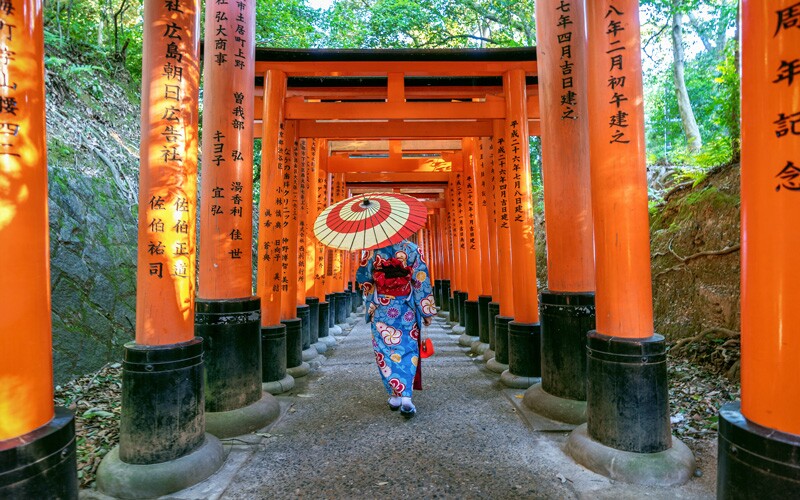
Seijin No Hi
Seijin no Hi, or Coming of Age Day, is another rite of passage in Japanese culture. It welcomes into adulthood those who have turned age 20 and is held each year on the second Monday in January.
Seijin no Hi has been practiced in Japan since AD 714, when a young prince dressed in new robes and changed his hairstyle to reflect his passage into adulthood.
On this celebration day, new adults gather and enjoy encouraging speeches from government officials.
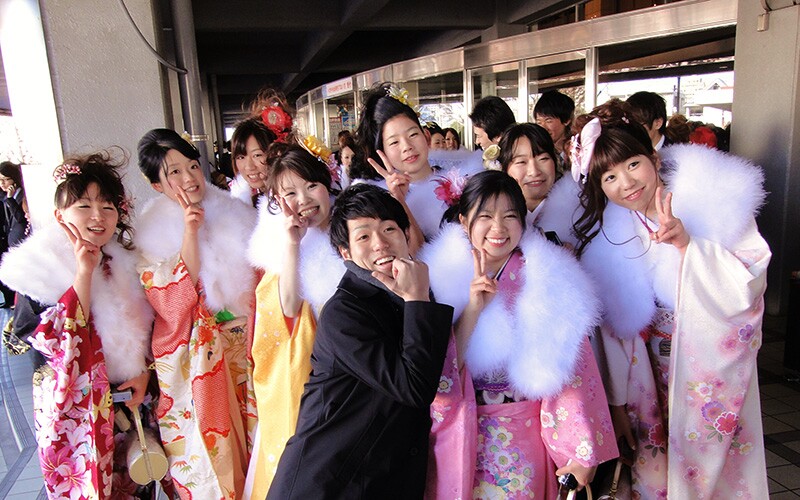
Photo provided by Dick Thomas Johnsonhttps://creativecommons.org/licenses/by/2.0/
Kanreki Rite of Passage
In many cultures, people don’t see getting older as something to celebrate. In Japan, turning 60 years old is a time of celebration!
Kanreki means “return” and “calendar,” as in returning to your beginning cycle; a person turning 60 years old has completed one cycle in traditional calendars.
To mark kanreki, the celebrant man or woman dresses in a vibrant red vest and hat, is seated on a red cushion, and is given a white fan. Food, gifts, and decorations all have the red color theme to reinforce the hope that the birthday person will have a long and healthy life in a “second childhood.”
The Obon Festival: a Festival of Japanese Culture
The Obon festival is a way the Japanese honor their ancestors. This three-day summer festival has been celebrated for more than 500 years and takes place in July or August.
This Japanese Buddhist tradition encourages people to return to their ancestral family home places and clean and visit the graves of their ancestors. The spirits of the ancestors are said to revisit the family altars. Gifts of food, alcohol, and flowers are often left on the gravestone and altar as a respectful gesture to those who have passed away.
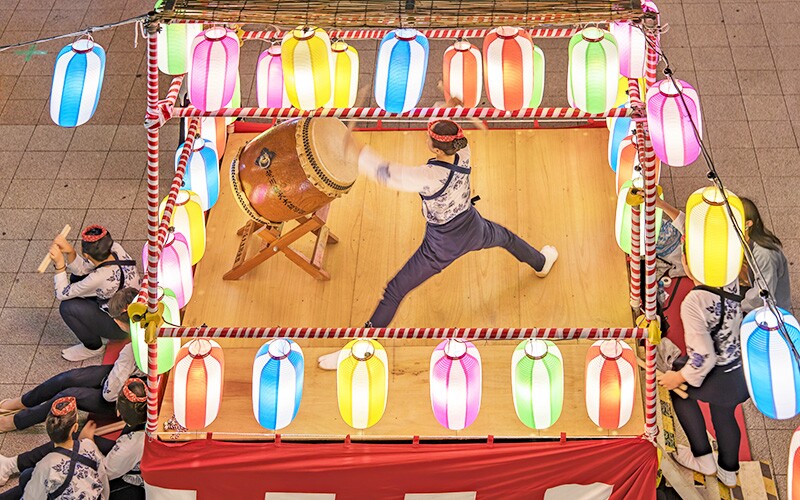
The festivities feature music and dance. Bon odori, meaning Bon dance, is a style of dancing distinctive to Obon. The style of Bon odori may vary from region to region.
The typical Bon dance revolves around a high wooden scaffold adorned with lights or lanterns. Musicians and singers stand on the scaffold, called a yagura, and attendees gather around the yagura, and dance in a circular direction.
Japanese Life in the Home
Traditional Japanese homes have very distinctive elements that make them unique, such as rush-and-cloth flooring called tatami mats, sliding doors called fusuma, and a kamidana or butsudan, which are house altars or shrines.
Home altars and shrines are for paying respect to ancestors and for worship. A Buddist often has a butsudan altar, which resembles a cabinet. Within the cabinet is usually a Buddha figurine, candlesticks, incense sticks, bells, and a place to leave offerings in the altar.
A kamidana is a miniature Shinto shrine in the home. Amulets or talismans are placed inside the shrine. As in traditional shrines found in a city or town, a rope hangs across the top, with white pieces of paper hanging from it. This rope and paper show the kami, or god, the purity of shrine. You may also see vases, candlesticks, and white dishes for offerings of water, sake, and food.
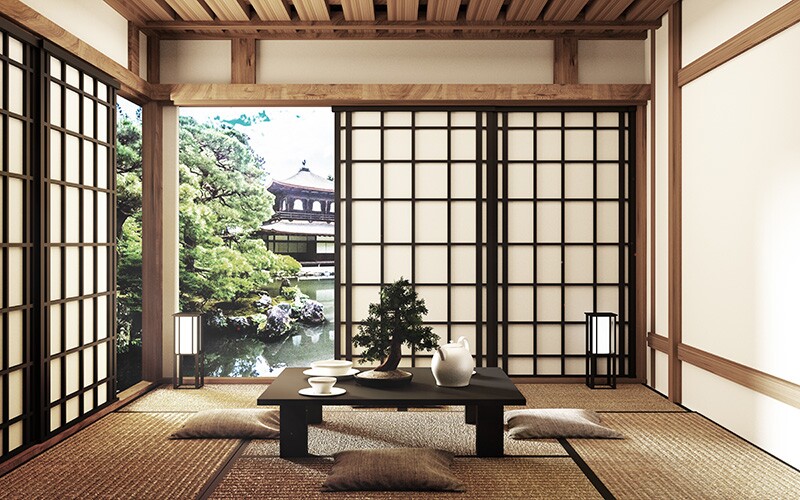
Before entering a Japanese home, visitors enter the genkan, a lowered platform made of concrete or pressed earth. They leave their shoes on the genkan and switch directly to indoor slippers before stepping up and entering the home. If slippers are not provided, visitors remove their shoes carefully so their socks do not touch the genkan, and then they step directly from their shoes to the inside of the home. Rooms within the home are separated by walls of washi paper. These moveable walls can be adjusted for needed space and even help in regulating temperatures in the home. As you can imagine, a paper wall doesn’t allow for much privacy. For this reason, modern homes in Japan often have more substantial walls.
Another distinctive part of a Japanese home is the tokonoma. This focal point is a slightly elevated alcove that is usually decorated with a hanging scroll, pottery, and flower arrangements. The art and flowers in the tokonoma may be changed from time to time to reflect the seasons or a special occasion. A seat placed in front of the tokonoma is considered a seat of honor reserved for guests and the head of the family.
A traditional Japanese home may also have a long corridor called the engawa. You can stroll down the engawa, which usually connects the living area with the garden. It is the perfect place to relax on a sunny, warm day.
Living in Japan Today
With the threat of earthquakes and being surrounded by the ocean, residents of Japan must be alert to earthquakes and tsunami warnings. The last large tsunami caused by an earthquake happened on 11 March 2011 and killed nearly 20,000 people in northern Japan. Even with the threat of natural disasters, life in Japan today is often thought of as safe, orderly, and friendly.
A wide variety of shopping options and delicious foods are available in the cities and larger towns. Additionally, Japan’s transit system is considered one of the cleanest in the world.
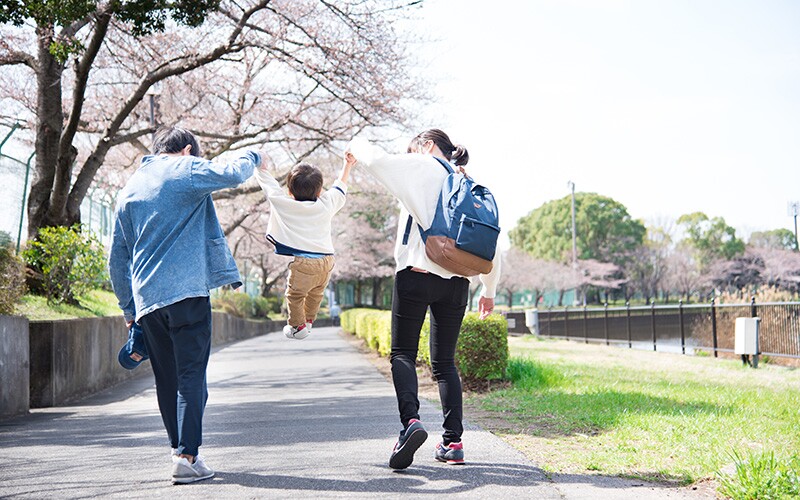
Think you might not like the crowds? Not all of Japan is wall-to-wall people. Cities are quite crowded, but many places in rural Japan offer open views.
As you wander this beautiful island, you can enjoy four distinctive seasons. These seasons lend themselves to pink cherry blossoms in the spring, lush greens in the summer, warm autumn breezes in the fall, and quiet, snowy nights in the winter.
Some Facts on Japan
Japan! A fascinating country. From facility of vending machines holding garments and shoes, to E-TAF automatic doors which open changing according to the body shape. So, the Japanese integrate technology into their daily lives.
The source of Japan’s technological progression is undeniably from the youth. Statistically among 34 OECD countries, Japanese students’ performance rank second in maths and first in science. Japan spends about 3.59% of its GDP on education. Also only 0.93% of females aged 15-19 have no education. Their education system includes 9 years of compulsory education and students start school at the age of 7.
Few of the coolest things which look like it came straight from the future. Japan is a technologically advanced country. Visiting this country itself seems like taking a time machine to the future!







